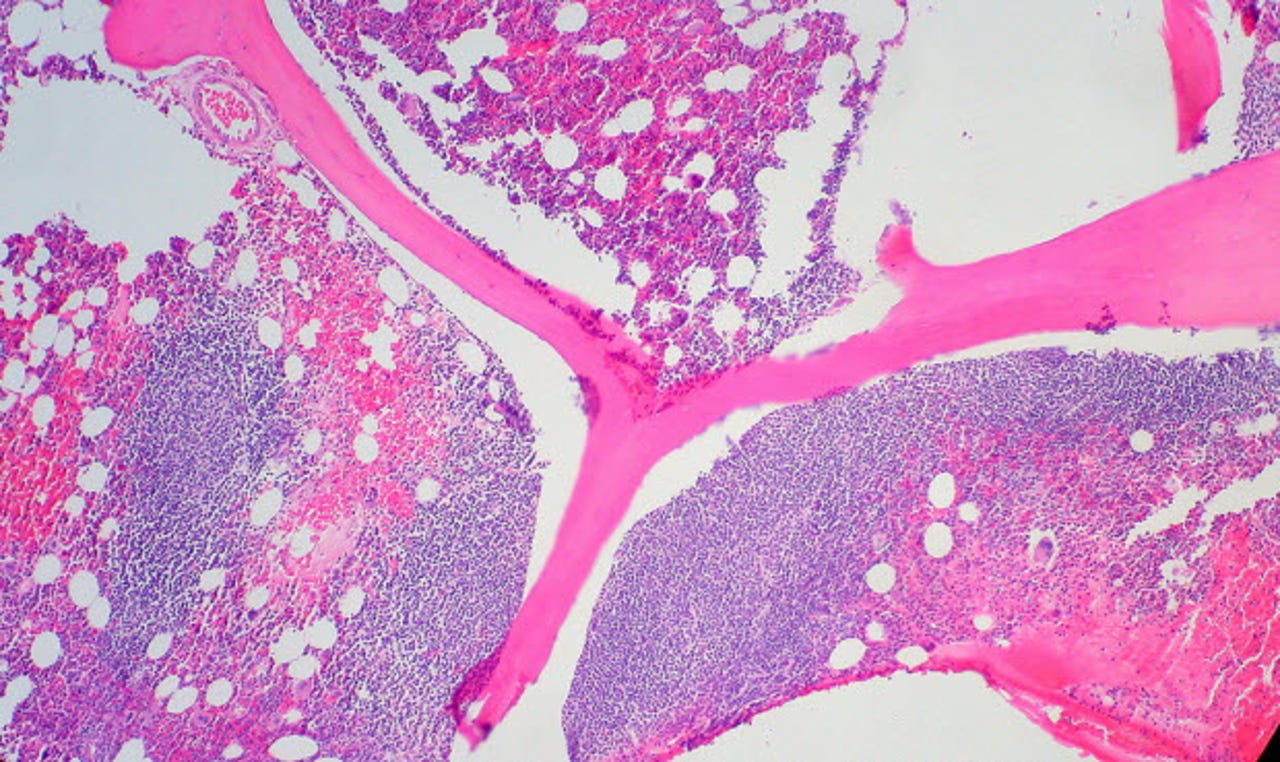How IT storage systems have doubled the number of bone marrow transplants

This photo of follicular lymphoma in bone marrow is courtesy of Ed Uthman, Flickr user euthman.
I recently saw an ad, which I thought was pretty cool. I clicked on a link that said, "For be the match, data is life." I'd heard of the Be the Match registry before. They're the nonprofit National Marrow Donor Program (NMDP).
The NMDP facilitates the collection of bone marrow. Well, that's kind of the old-school name. What are really being collected are hematopoietic, or blood-forming cells. The confusion arises because many people aren't aware that blood is actually born in the bones, in the marrow.
Hematopoietic cells are adult stem cells that originate from bone marrow, umbilical cord blood, and in the peripheral blood. Stems cells are important because they can multiply and differentiate, which means they can build new red blood cells, white blood cells, and platelets.
These cells are used to save lives by being transplanted to patients with life-threatening disorders. The recipients may suffer from diseases like leukemia, lymphoma, aplastic anemia, and other immune system and metabolic disorders.
Finding the right donor is really essential, and not so easy. A person who needs a hematopoietic cell transplant, and doesn't have a family member who happens to be a suitable match, can search the Be The Match registry for a matched unrelated donor or umbilical cord blood unit.
Before I send you to the video, I just want to be clear that this is just something I found interesting. As far as I know, NetApp isn't a sponsor or anything, I just find it heartwarming to see case study examples of how IT is helping important health efforts. If you want to geek out on it, go ahead and download the white paper.
If you'd like to check out the ad I saw, visit the Be the Match Story. You can watch a video about how IT storage systems have been used to help double the number of transplants that can be facilitated by reducing the time needed to find the right donor (when time is truly of the essence), and lean about the encouraging numbers the nonprofit projects for the future.
Would you consider donating marrow? How do you like the way this large registry is being managed with the help of an innovative IT solution? Donate your thoughts in the TalkBacks below.
